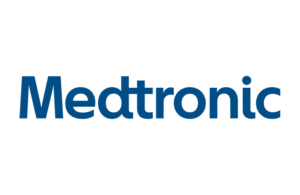 Medtronic (NYSE:MDT) today reported second-quarter financial results that beat Wall Street expectations on earnings but missed on revenue.
Medtronic (NYSE:MDT) today reported second-quarter financial results that beat Wall Street expectations on earnings but missed on revenue.
In addition, the world’s largest medical device company reduced its guidance for the rest of the year amid slower market procedure volume recovery in some markets. While it worked through its most acute supply chain challenges, Medtronic resolved the problems later than expected in the quarter.
Investors reacted by sending MDT shares down more than 5% to $78.15 apiece in premarket trading.
Medtronic earned $427 million, or 32¢ per share, off $7.585 billion for the quarter ended Oct. 28. 2022. The bottom line was down 67%, and the top line was down 3% compared with Q2 2021.
Adjusted to exclude one-time items, Medtronic saw EPS of $1.30. The results were 2¢ ahead of The Street, where analysts expected adjusted EPS of $1.28 and $7.7 billion in revenue.
“Slower than predicted procedure and supply recovery drove revenue below our expectations this quarter. We continue to take decisive actions to improve the overall performance of the company, including streamlining our organizational structure, strengthening our supply chain, driving a performance culture, and strategically allocating capital to support our best growth opportunities with the investments they deserve,” CEO Geoff Martha said in a news release.
Medtronic reducing guidance
Medtronic now expects a stronger dollar to negatively affect its full-year results more than previously expected. The company expects fiscal year 2023 second-half revenue growth of 3.5–4.0% and full-year adjusted EPS of $5.25–5.30. The company previously predicted non-GAAP EPS in the range of $5.53–5.65.
“We continue to expect organic revenue growth acceleration, with the second half growing faster than the first. However, given a slower pace of market and supply recovery, we’re reducing our revenue expectations for the remainder of the year,” said CFO Karen Parkhill.
“On the bottom line, we are driving expense reductions throughout the company to help offset the lower revenue and the effects of cost inflation. We are also committed to investing appropriately for the long-term, allocating capital to our most promising growth drivers and executing tuck-in acquisitions, all designed to reach more patients and create greater value for our shareholders.”